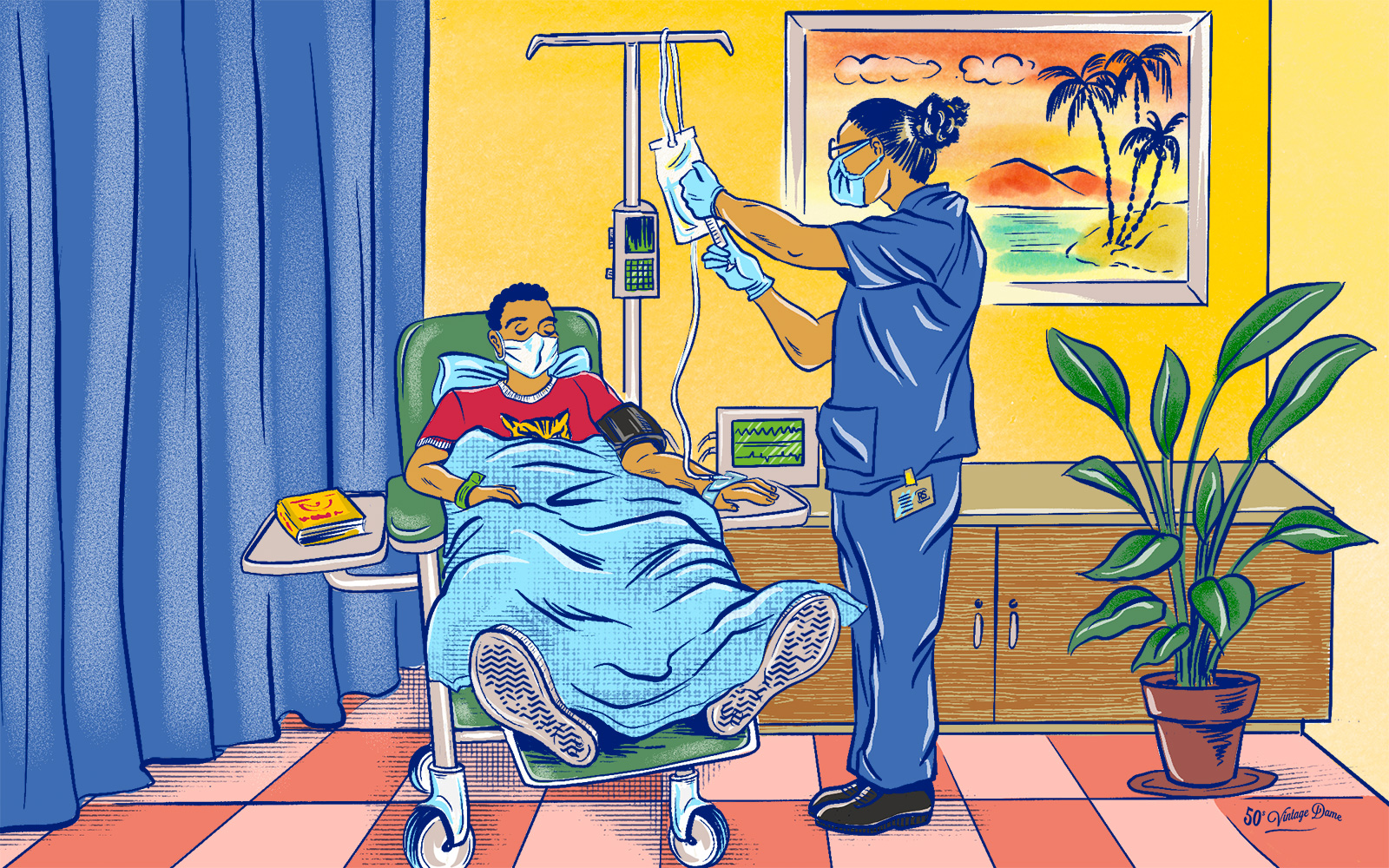Ketamine treatment is on the rise because it’s been shown to be a powerful and effective treatment for treatment-resistant depression. But what is the current standard of care for ketamine treatments? Since ketamine treatments are only recently gaining traction in managing mental health, many people are trying ketamine for the first time. And, of course, people want to know what to expect when they enter a clinic.
Why Is Ketamine Treatment So Expensive?
People who have bought ketamine online or on the black market have found it to cost anywhere between $15-$80 per gram, depending on location. But, ketamine clinics are charging $300-$1500 per ketamine infusion and between $400 and $2000 per transfusion. The average cost is right around $500.
This is a steep price to pay, especially since ketamine is not covered by insurance. Some people have gotten their treatments covered by insurance in the appeal process and only if they have a serious-enough chronic mental health challenge, but there’s no guarantee. Ketamine treatment is still too expensive for mainstream use.
Ketamine providers are likely making a high profit, which is fine as long as providers are in business for the right reasons and putting their patients first. If the standard of care for ketamine treatment is not held to a high-standard, public backlash could set the psychedelic industry back.
So what is the patient actually paying for when you get a ketamine treatment?
Protocol and Expertise: Ketamine Clinic Requirements
There have been inconsistencies with the standard of care for ketamine treatments. Patient screenings, ketamine dosage and infusion frequency have been inconsistent from clinic to clinic. This is partially due to treatments being tailored to individuals. But also because the recommendations by the American Psychiatric Association are not always being followed. This can be dangerous for ketamine treatment patients.
Without published data on a specific ketamine treatment protocol, a provider can’t claim its effectiveness. Many providers are claiming that their protocols are more effective than data published in scientific journals. And while it’s possible it is more effective, there’s no way of proving its effectiveness, and it’s risky to follow a protocol without proven data.
Always Do Independent Research
Before going in for ketamine treatment, always ask for the protocol. Once it has been greatly detailed, conduct independent research to see if the protocol matches the standard of care for ketamine treatment. A few things to should consider are the:
- Patient selection process
- Clinician experience
- Medication delivery
- Treatment setting
- Follow-up assessments
Ketamine Patient Selection Process
The standard of care for ketamine treatments requires a close look at the patient’s depression, the time frame of the current depressive episode, depression treatment history, and the urgency of the ketamine treatment.
Patients who have major depression but don’t have psychotic features to their depression are the patients who have the most success with ketamine treatments. The Anxiety & Depression Association of America recommends that each patient goes through a thorough pretreatment evaluation to ensure the patient will benefit from treatment. Patient selection requires consideration and assessment of other medical, psychological and social factors that could potentially shift the individual’s benefit to risk ratio.
The ideal scenario: Patients have an intake session during which they receive a full psychological and psychosocial assessment. During the intake sessions, patients don’t receive any medication. This is a time for patients to ask questions and get to know the therapist and doctors who will be there for the experience. The patient’s goals are a big discussion point. An individualized plan is developed during this session.
Ketamine Clinician Experience
Currently, there are not clearly defined training requirements for ketamine clinicians who are administering ketamine lower than the anesthetic dosage. This can skew the results of the treatment and possibly cause harm to the patient.
Always ask what the clinician’s experience is. How long have they been practicing ketamine treatments? What is their training? What are their credentials? And how successful have the treatment of their other patients been? Again, do further research to validate these claims. Research the credentials and training methods of the facility where the medical provider was trained, and be sure to understand the methods and approach. Also, look into the success rate of their patients in overcoming depression. For reference, the standard success rate is between 50 percent and 70 percent.
Medication Delivery
The most common dose of ketamine is 0.5mg/kg, but depending on the patient, doses may range between 0.1mg/kg and 0.75mg/kg. Ketamine is often administered intravenously across 40 minutes, but sessions can be safe and effective as quick as two minutes and as long as 100 minutes in duration.
Intravenous is the most common route of administration in a clinical setting. Sublingual, intranasal, subcutaneous, oral, transmucosal and intramuscular are also safe and effective for certain individual circumstances. But the 0.5mg/kg over 40 minutes is the more effective delivery method to treat severe depression. Always ask which type of ketamine is being used to confirm that it’s S-ketamine — the ketamine that’s FDA approved to treat treatment-resistant depression.
Number of Sessions in Ketamine Therapy
The number of sessions in ketamine treatment depends on the individual situation. Some patients have only a few sessions. Whereas someone with deep-rooted mental health struggles may have a series of five to 15 sessions over the course of a few weeks, and then go twice a year for boosters. One session may be enough for someone who is having one isolated challenging life event.
A common treatment plan is to have six infusions within about two weeks, followed by an infusion every four to six weeks for maintenance. But again, this will change from person to person and should be discussed well ahead of time when developing the treatment plan with a doctor.
Ketamine Treatment Setting
While the standard of care for ketamine treatments has proven to be safe up to this point, providers must prepare for any potential negative or concerning effects on the cardiovascular system. Research and studies have shown low levels of evidence for monitoring with doses under the dosage used for anesthetics. However, clinics should have the proper equipment to monitor patients accurately. Clinics should have basic cardiovascular monitoring equipment — electrocardiogram and blood pressure — and respiratory monitoring equipment such as oxygen saturation or end-tidal CO2.
At some clinics, there’s not a lot of time that the patient and clinician are together. Once the patient starts receiving the medication, the patient is often left in the room while a pump automatically delivers the ketamine.
The ideal scenario: The doctor prepares the patient for the session, addresses any medical concerns and administers the ketamine. A therapist is present for the whole appointment to support the patient. The doctor can leave the room because the therapist is there. The clinic provides comforts like music, blankets and pillows to keep the patient both emotionally and physically comfortable.
Follow-up Assessments
The short-term positive effects of ketamine therapy are significant. But the long-term effects of ketamine treatment are still being researched. Some patients have long-term sustained relief from depression after a series of ketamine treatments. But many people eventually revert to feeling depressed and hopeless. This is why booster appointments have been effective. While the booster appointments — usually about every six months after the initial series treatment — have been effective, there is minimal published data supporting the effectiveness of long-term, sustained ketamine treatments.
It’s important that the doctor discusses both the benefits and risks of both short-term and long-term treatment before the initial treatment.
Ask Questions About the Standard of Care for Ketamine Treatments
Knowing all of the information about the treatment upfront will help ensure a high-quality standard of care for the ketamine treatment. It is the patient’s responsibility to research thoroughly to the best of their ability. So while it’s certainly the responsibility of the clinic to ensure safety and wellbeing of each patient, it’s important that all parties are up-to-date on the best practices of the standard of care for ketamine treatments. Then, when a clinic explains its protocol, the patient will know if it meets the current standard of care. Advocate for yourself and be well!
Disclaimer: Ketamine is potentially categorized as an illegal drug. Reality Sandwich is not encouraging the use of these drugs where prohibited. However, we believe that providing information is imperative for the safety of those who choose to explore these substances. This guide is intended to give educational content and should in no way be viewed as medical recommendations.















